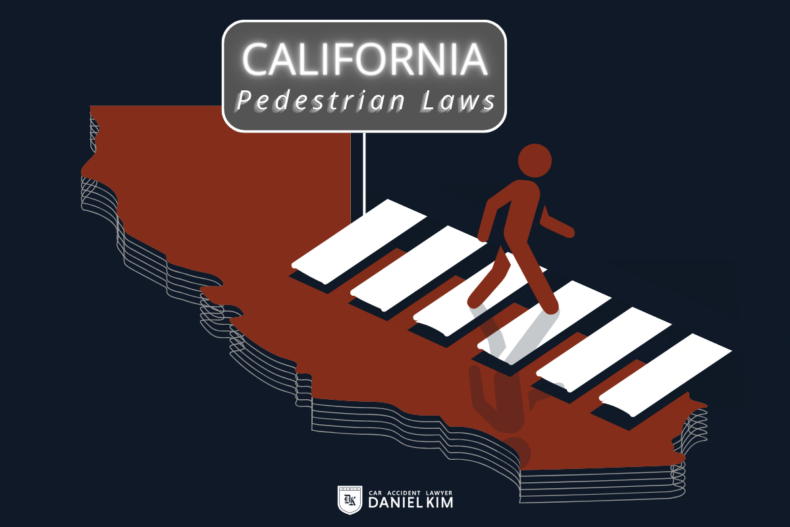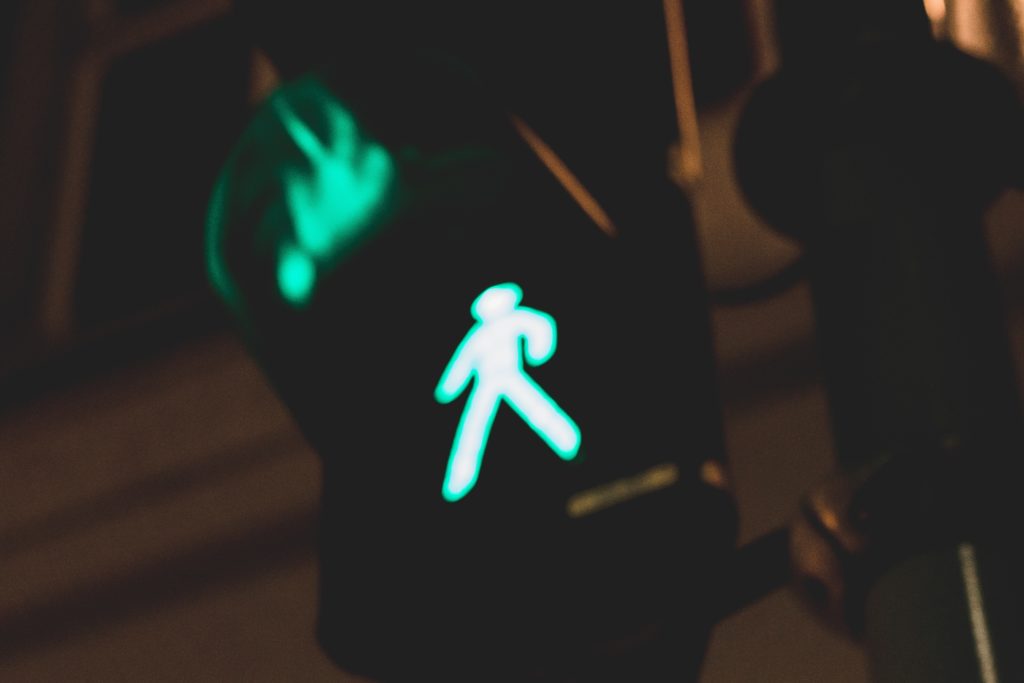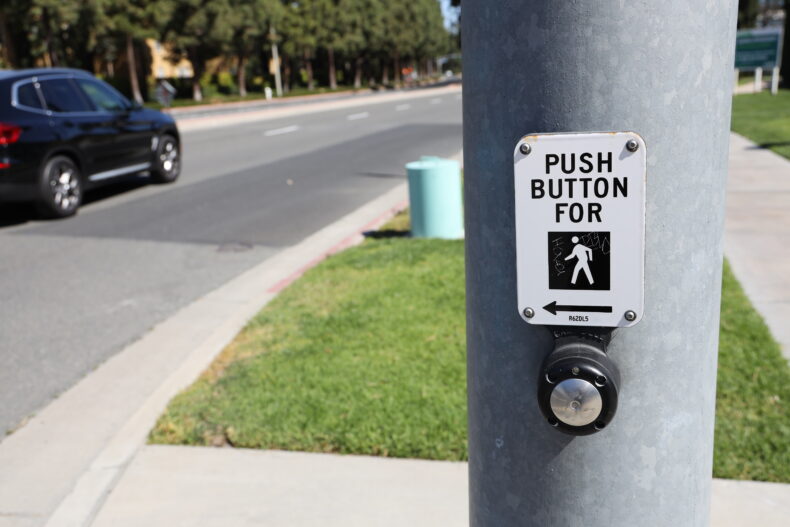California Pedestrian Laws
Every year pedestrian fatalities continue to increase in California. That amount rose 26% between 2014 and 2018. More alarming, the state’s pedestrian fatality rate is 25% above the national average.
With the likelihood of striking a pedestrian being so high, it is important to be aware of pedestrian accident laws in California. Understanding fault is one way to ensure that both motorists and pedestrians take all necessary precautions to prevent an accident.
California Pedestrian Laws: What You Need to Know
To prevent a pedestrian accident, it is important know the pedestrian accident laws. California law stipulates that drivers and pedestrians share responsibility for one another.
Pedestrian safety is of the utmost importance, but that doesn’t mean there aren’t rules for pedestrians. For example, someone cannot jaywalk with the expectation that oncoming traffic will come to a halt. Additionally, they cannot stop traffic while crossing an intersection where the traffic signal has not turned green.
If you are a pedestrian, take precautions and follow road signals, walk on sidewalks when they’re available, wear light or reflective clothing, especially at night, and always walk against oncoming traffic. Regardless, both motorists and pedestrians must exercise reasonable care. Drivers have to watch for pedestrians and pedestrians must apply caution when walking along the roadways. Here are some of the main California pedestrian accident laws to familiarize yourself with.
Right-of-Way
Under California Vehicle Code 21950, pedestrians have the right of way when crossing at a marked or unmarked crosswalk. Drivers who do not yield right of way to pedestrians and cause injury will be considered at fault. If a driver causes injury to a pedestrian, they may file a pedestrian accident lawsuit against the driver.
Crosswalk Stopping
Drivers are not allowed to stop in the middle of crosswalks. This action creates a situation where pedestrians have to walk around the vehicle, exiting the crosswalk. Likewise, drivers should never go around other drivers stopped at a crosswalk. It is safe to assume that the vehicle is waiting for a pedestrian to cross the street.
Jaywalking
As of 2023, jaywalking is legal in California, however, a pedestrian may still be ticketed if there is an “immediate danger of a collision.” Therefore, pedestrians can cross outside of a crosswalk as long as it is safe to do so. Still, if a pedestrian crosses an intersection when a driver has a green light, the driver should avoid colliding with the jaywalking pedestrian.
Blind Pedestrians
When a pedestrian with a visual impairment wants to cross an intersection, they usually signal by pulling in a walking stick or white cane and stepping back from the curb. When you see a person make this signal, always stop for them. It is best to leave at least five feet between your vehicle and the crosswalk. Find more pedestrian laws regarding blindness here.
What to Do When a Pedestrian Accident Results in Injury
Any time a traffic accident occurs, it is important to notify the police. This is equally true in the event of a pedestrian accident. When a pedestrian accident occurs and the pedestrian gets injured as a result, the parties involved must call 911. The responding officer will then create a police report.
Even without the report, the injured pedestrian can file an insurance claim. However, in the event the other person is at fault, a report makes that much easier to prove. This is because the report details a summary of what happened, how the accident happened, and statements from eyewitnesses.
Pedestrian Accident Injuries Requiring Legal Representation
Pedestrian accidents almost always result in injury. Injured victims may be entitled to compensation if their accident was caused by the negligence of another person. Working with a pedestrian accident lawyer after a crash can improve the chances of recovering a fair and full settlement. Compensable injuries that are sustained after an accident include:
Spinal Cord Injury
Car accidents are one of the most common sources of a spinal injury. But pedestrian accidents also result in spinal cord injuries. These injuries are often serious and can lead to paralysis, requiring long-term care. In the most serious accidents, a spine injury can even result in death.
Traumatic Brain Injury (TBI)
Traumatic brain injuries can be life-threatening. They are particularly dangerous because symptoms often go unnoticed. It is important to pay close attention to these hidden injuries after a pedestrian accident. This will help avoid complications and prevent further damage. These symptoms include loss of sleep, headaches, dizziness, vomiting, and loss of coordination. To read more about traumatic brain injury symptoms, click here.
Second Impact Syndrome
Second impact syndrome is when multiple concussions occur in close succession. If the person is still experiencing symptoms from the first concussion at the time they sustain a second, the brain may swell within the skull. This kind of injury is often fatal and can result in wrongful death.
Determining Fault in a Pedestrian Accident in California
You might think that the driver of a vehicle is always at fault when a pedestrian accident occurs. However, this is not always the case. Pedestrians do not always have the right of way. Therefore, they can also be held responsible for accidents.
For example, a pedestrian who is struck by a vehicle while crossing the street outside of a crosswalk is partially at fault. Therefore, there are circumstances where both the driver and the pedestrian share fault. This is referred to as comparative negligence.
What You Need to Know About the Comparative Negligence
Comparative negligence is when multiple parties are liable for causing an accident that resulted in injury. The injured person filing a personal injury claim can still be compensated. However, the amount of compensation is reduced by their percentage of fault. For example, if the plaintiff is 20% liable, they will only receive 80% of the total award.
What to Do After a Pedestrian Accident
Pedestrian accidents are far too common in California. Unfortunately, the vast majority of pedestrian accidents result in injury. It is important to protect yourself by taking certain precautions and knowing your rights if an accident does occur.
Contact an experienced pedestrian accident attorney for guidance. The Law Offices of Daniel Kim offers a free consultation to get started. To learn more, schedule your free case evaluation today.



